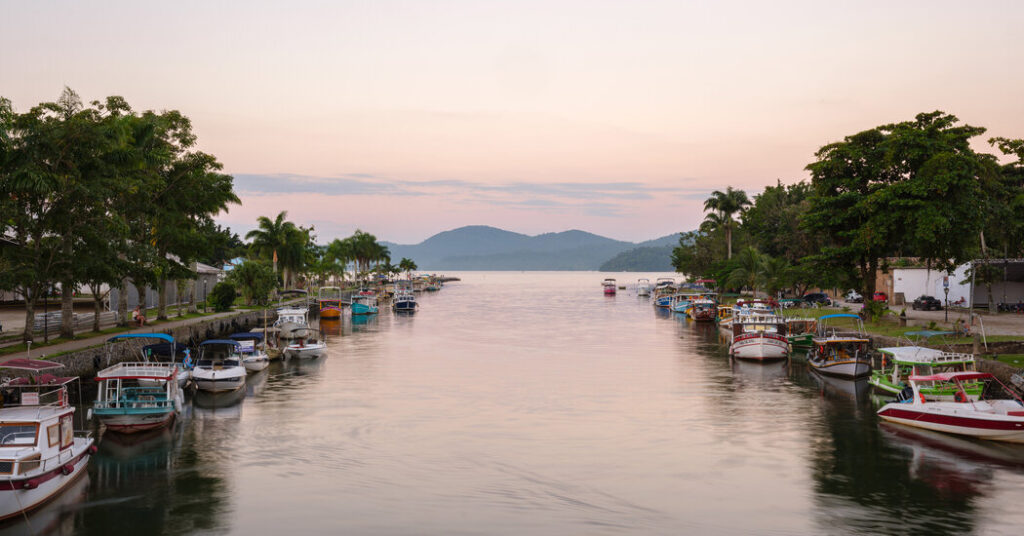T’s monthly travel series, Flocking To, highlights places you might already have on your wish list, sharing tips from frequent visitors and locals alike. Sign up here to find us in your inbox once a month, and to receive our weekly T List newsletter. Have a question? You can always reach us at tlist@nytimes.com.
Roughly halfway between São Paulo and Rio de Janeiro, the coastal town of Paraty (population 45,000) isn’t the easiest place to reach. It requires a four-hour, mostly mountainous drive from either city, a 45-minute helicopter charter or arrival by sea. It’s that relative seclusion that keeps the tourist hordes and unbridled development at bay, despite the town’s obvious appeal. Set on Brazil’s Costa Verde, with mountains covered in rainforest on one side and the emerald green waters of Ilha Grande Bay on the other, Paraty (pronounced para-CHEE by locals), preserves more than 30 blocks as its historic quarter, a grid of pedestrian-only cobblestone streets lined with whitewashed 18th- and 19th-century facades, many of them remnants of the Portuguese colonial era.
Starting in the mid-1600s, the town grew prosperous as a seaport during the country’s gold rush (many of the biggest gold mines were in the neighboring inland state Minas Gerais) — and as a hub for the slave trade. African slaves not only worked in the mines but built much of the town’s early infrastructure, such as its roads. Once the gold stopped coming through Paraty for export in the early 1700s, the town continued to harvest sugar cane and produce cachaça, the national spirit, before shifting its economic focus to the coffee trade. At the end of the 19th century, Santos, 190 miles to the south, supplanted Paraty as the country’s primary coffee-exporting port, and the town began to languish. “It fell off the map,” says Luana Assunção, the owner of the Rio-based travel company Free Walker Tours. “It became isolated and poor. Many houses were abandoned.”
By the 1970s, a new highway and an influx of urban transplants had given Paraty an infusion of new life. Lured by the area’s affordability, a number of artists, designers and other creative types began renovating the old mansions and opening a handful of galleries, boutiques, cafes and small hotels, turning the long-forgotten town into an alluring vacation destination.
“I was worried that mass tourism would endanger the future of the culture and the nature in Paraty, but it didn’t happen,” says the nature photographer Dom João de Orleans e Bragança, who has been visiting Paraty since 1968 and now lives there most of the year. He credits the strict building codes for imbuing the town with a certain timeless quality, even after the pandemic when the area’s second-home owners began spending more time in Paraty. “You’ll never see a skyscraper, and we don’t have big resorts or hotels here.”


